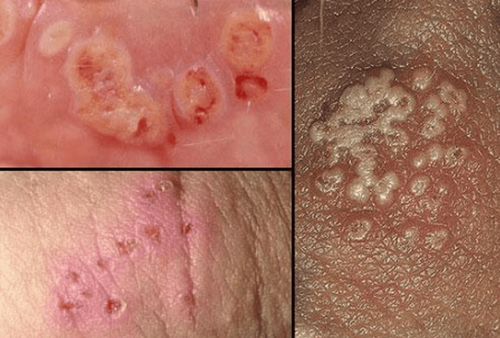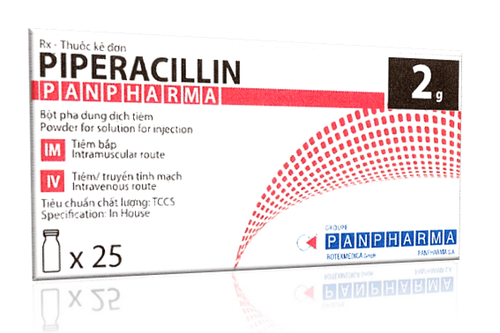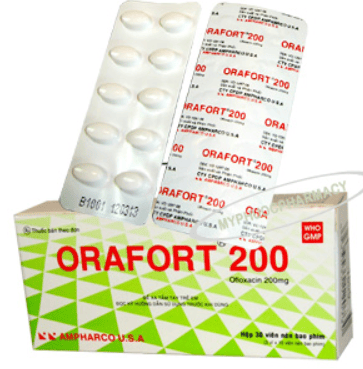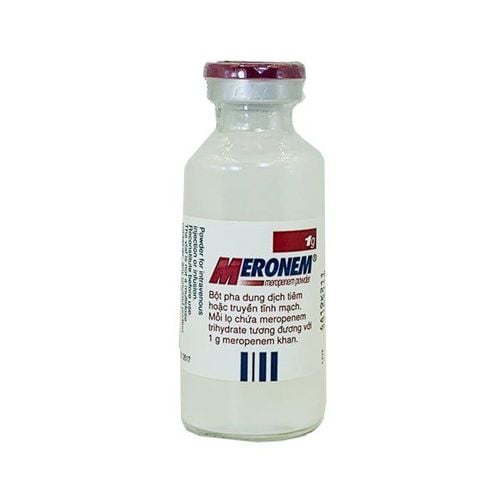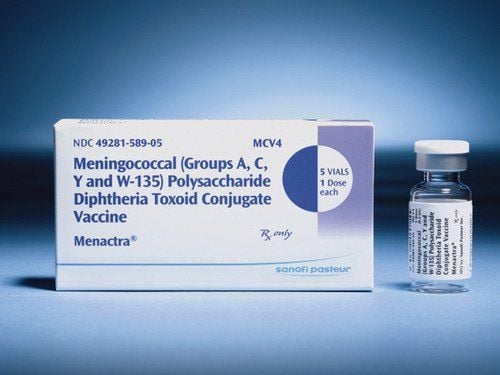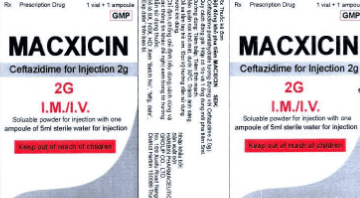This is an automatically translated article.
Rocacef contains the active ingredient Cefoperazone 1g, which is prepared in the form of an injectable powder belonging to the group of anti-parasitic, anti-infective, anti-viral, anti-fungal drugs. Let's learn about the uses and notes when using Rocacef through the article below.1. Uses of the drug Rocacef
Rocacef is indicated for the treatment of the following cases:
Severe infections caused by susceptible gram-negative and gram-positive bacteria and organisms already resistant to other beta-lactam antibiotics, including urinary tract infections upper and lower respiratory tract, sepsis, meningitis. The patient has peritonitis, cholecystitis, cholangitis and other intra-abdominal infections... The patient has skin and soft tissue infections, bone and joint infections. Patients with pelvic inflammatory disease, endometritis, gonorrhea and other infections of the genital tract. Prophylaxis for postoperative infection in patients undergoing abdominal, gynecological, cardiovascular, and orthopedic surgery. Pharmacodynamic properties:
Cefoperazone is a semi-synthetic antibiotic belonging to the 3rd generation Cephalosporin group, which has a bactericidal effect by inhibiting the synthesis of growing and dividing bacterial cell walls. Cefoperazone has antibacterial activity similar to ceftazidime. Beta lactamases formed in most gram-negative bacteria have no effect on altering Cefoperazone. Therefore, the drug has strong activity against a broad spectrum of gram-negative bacteria, including penicillinase-producing strains of N. gonorrhoeae and most strains of Enterobacter, Citrobacter, Proteus, Morganella, Providencia, Salmonella, Shigella and Serratia spp. Cefoperazone is also active against many gram-positive bacteria but less so than 1st and 2nd generation cephalosporins. Cefoperazone is active against a number of anaerobic bacteria including Peptococcus, Peptostreptococcus, Clostridium strains, Bacteroides and Bacteroides strains. Pharmacokinetic properties:
Cefoperazone is widely distributed in body tissues and fluids. The drug is approximately 82-93% bound to plasma proteins, depending on concentration. Cefoperazone is generally poorly penetrated into the cerebrospinal fluid, but when the meninges are inflamed, the penetration concentration changes. Rocacef is not absorbed from the gastrointestinal tract. After 1-2 hours of intramuscular injection, peak plasma concentrations are reached. The drug reaches peak plasma concentrations 2-3 times higher than peak plasma concentrations of intramuscular injection 15 to 20 minutes after intravenous administration. The plasma half-life is about 2 hours, which is prolonged in neonates and in patients with liver or biliary tract disease. The drug is eliminated 70-75% in bile and rapidly achieves high concentrations in bile. Cefoperazone is eliminated in the urine mainly by glomerular filtration.
2. Dosage and how to use Rocacef
How to use:
Rocacef is administered by deep intramuscular injection or intermittent intravenous infusion over 20 to 30 minutes. When dissolving Rocacef at concentrations exceeding 333 mg/ml, long and vigorous shaking is required to dissolve the drug. Dosage:
Depending on the patient's condition, the duration of treatment with the drug will be different. Group A beta-hemolytic Streptococcus infections must be treated for at least 10 days to help prevent acute rheumatic fever or glomerulonephritis.
The recommended dosage of Rocacef is as follows:
For adults:
Patients with mild and moderate infections: The usual dose is 1-2g/time, every 12 hours. Patients with severe infections: Maximum 12g/24 hours, divided into 2-4 times. People with liver disease, biliary obstruction: Do not use more than 4g/24 hours. Patients with liver and kidney failure: Not more than 2g/24 hours. Patients with renal impairment: No dosage adjustment is required. For children:
Normal dose for children : Use dose 25-100mg/kg, every 12 hours. Note: Do not give intramuscular injection to infants when the drug is mixed with a solution containing benzyl alcohol.
The above recommended therapeutic dose for Rocacef is for reference only. Therefore, patients need to use the drug as prescribed by the treating doctor to ensure safety and achieve the best effect.
Overdose and treatment:
Common symptoms of Rocacef overdose include: Increased neuromuscular excitability, convulsions (especially in patients with renal failure). Treatment: The possibility of drug interactions and unusual pharmacokinetics of the patient should be considered. Prioritize protection of the patient's airways by supporting ventilation and perfusion. If the patient develops convulsions, the drug should be stopped immediately, anticonvulsant therapy may be used if clinically indicated. Drugs are removed from the blood by hemodialysis, but most of the measures are supportive or symptomatic.
3. Rocacef side effects
Common symptoms:
Temporary eosinophilia. Nodular skin rash. Go outside. Uncommon symptoms:
Whole body fever. Decreased platelets. Urticaria, itching. Phlebitis at the site of infusion, temporary pain at the site of intramuscular injection. Rare symptoms:
Headache, convulsions, appearance of restlessness. Decreased blood prothrombin. Nausea, pseudomembranous colitis. Stevens-Johnson syndrome, red rash. Cholestatic jaundice, increased AST, ALT. Interstitial nephritis, nephrotoxicity transient increase in blood urea/creatinine. When there are unusual symptoms or unwanted effects of the drug, users need to stop using, consult a doctor or go to the nearest hospital for timely treatment.
4. Rocacef drug interactions
Some interactions with Rocacef drugs are as follows:
Drinking alcohol within 72 hours of taking Cefoperazone can occur Disulfiram reactions with typical symptoms such as flushing, sweating, headache, nausea, vomiting , fast heart beat . Increased prothrombin-lowering effect of Cefoperazone when used concomitantly with Warfarin and Heparin. Cefoperazone has physical incompatibility with Aminoglycosides, should not be used concurrently with these two drugs.
5. Some notes when using Rocacef
Only the treating physician can change the dose and combination forms of Cefoperazone. Patients need to inform the treating doctor if there are any early manifestations of allergy to Cefoperazone as well as other drugs, foods, drinks... Do not use for sensitive patients. with cephalosporin antibiotics. For patients with a history of allergy to beta-lactam antibiotics, long-term use of Cefoperazone leads to overgrowth of susceptible strains, the patient should be carefully monitored. If there is superinfection, the drug must be stopped. Cefoperazone is eliminated 70-75% via the biliary tract. In patients with liver disease or obstructive jaundice, the dose should be adjusted accordingly. Use with caution in pregnant and lactating women. Hopefully, the information shared about the uses, usage and some necessary notes about Rocacef will help patients use the drug safely and effectively.
Please dial HOTLINE for more information or register for an appointment HERE. Download MyVinmec app to make appointments faster and to manage your bookings easily.




